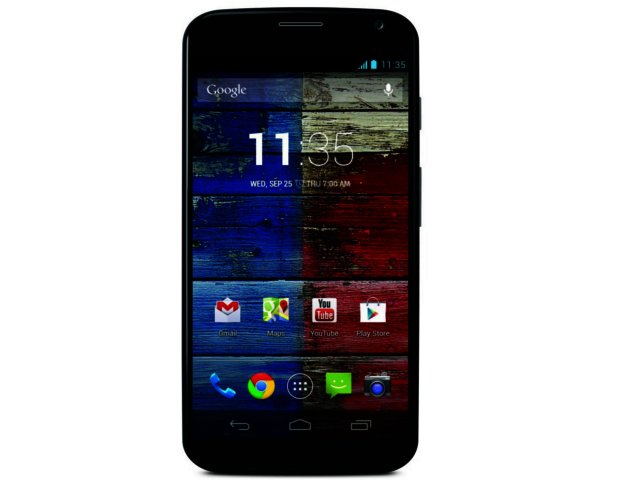Motorola finally unveils its Moto X flagship smartphone
By Hanleigh Daniels 2 August 2013 | Categories: news
After months of rumours, speculation and leaked photos, Google-owned Motorola Mobility finally unveiled its newest flagship smartphone, dubbed the Moto X.
The Ace up Moto X’s feature sleeve is its always on voice functionality (video posted below), which works similarly to Apple’s Siri, except users do not need to press any buttons to launch this service. The Moto X can respond immediately to voice commands thanks to Motorola’s X8 processing board, which includes a dedicated natural language processor and contextual computing processor.
Rounding off the processing prowess of the Moto X is a dual-core Qualcomm Snapdragon S4 Pro clocked at 1.7 GHz per core. This means that when it comes to CPU power for apps and games at least, the Moto X is outgunned in the processing department by both the One and S4, as these pack newer and faster processors in the quad-core Qualcomm Snapdragon 600 and octa-core Samsung Exynos 5210 respectively.
The S4 Pro CPU should still deliver smooth and snappy performance though and is coupled with 2 GB of RAM. Android 4.2.2 Jelly Bean runs the mobile OS show as opposed to the latest version of Google’s mobile platform, namely Android 4.3. Where the Moto X seems to have the edge is in battery life, with Motorola claiming that users will see a battery life of up to 24 hours via its 2200 mAh battery.
Display and camera functionality
The smartphone is definitely not the thinnest or lightest device on the market, measuring in at 129.3 x 65.3 x 10.4 mm and tipping the scales at 130 g. It boasts a 4.7" (720p resolution; 316 ppi) AMOLED touchscreen, which does not match the full HD resolution treatment afforded to other flagship device screens including those of the Galaxy S4 (review) and HTC One (review).
In terms of optics, the Moto X offers a 10 MP rear-facing Clear Pixel camera with LED flash that records full HD (1080p) videos. According to the company, its Clear Pixel camera technology will deliver enhanced photos during low-light conditions. There is a 2 MP front-facing snapper for capturing ‘selfies’ and making video calls.
Despite lacking a dedicated camera button, the Moto X is able to snap photos quickly even while it’s locked. A user simply picks the smartphone up and flicks their wrist to shake the device from side-to-side, which takes them to the camera interface. Once here they simply press anywhere onscreen to take the photo (demo video posted below).
Other features
Users have access to either 16 GB or 32 GB worth of internal memory, but they cannot expand upon this since the Moto X like the iPhone 5 (review) and Nokia Lumia 1020, does not have a microSD memory card slot. Motorola does, however, provide an additional 50 GB worth of cloud-based storage free for two years via Google Drive.
Also onboard is WiFi 802.11 ac (dual-band capable; latest standard), Bluetooth 4.0 Low Energy, blistering download speed via LTE (4G) connectivity, plus a good dollop of customisability via an interactive web-based tool dubbed Moto Maker.
Motorola enables buyers to use this tool to choose the colour of the smartphone’s front panel (black or white), rear panel (up to 18 different colours to select from), and accent colour for the camera rim and side buttons.
In other mobile related news, Samsung recently announced dual-mode LTE (4G) versions of its Galaxy S4 and Galaxy S4 Mini smartphones.
Most Read Articles

Have Your Say
What new tech or developments are you most anticipating this year?



